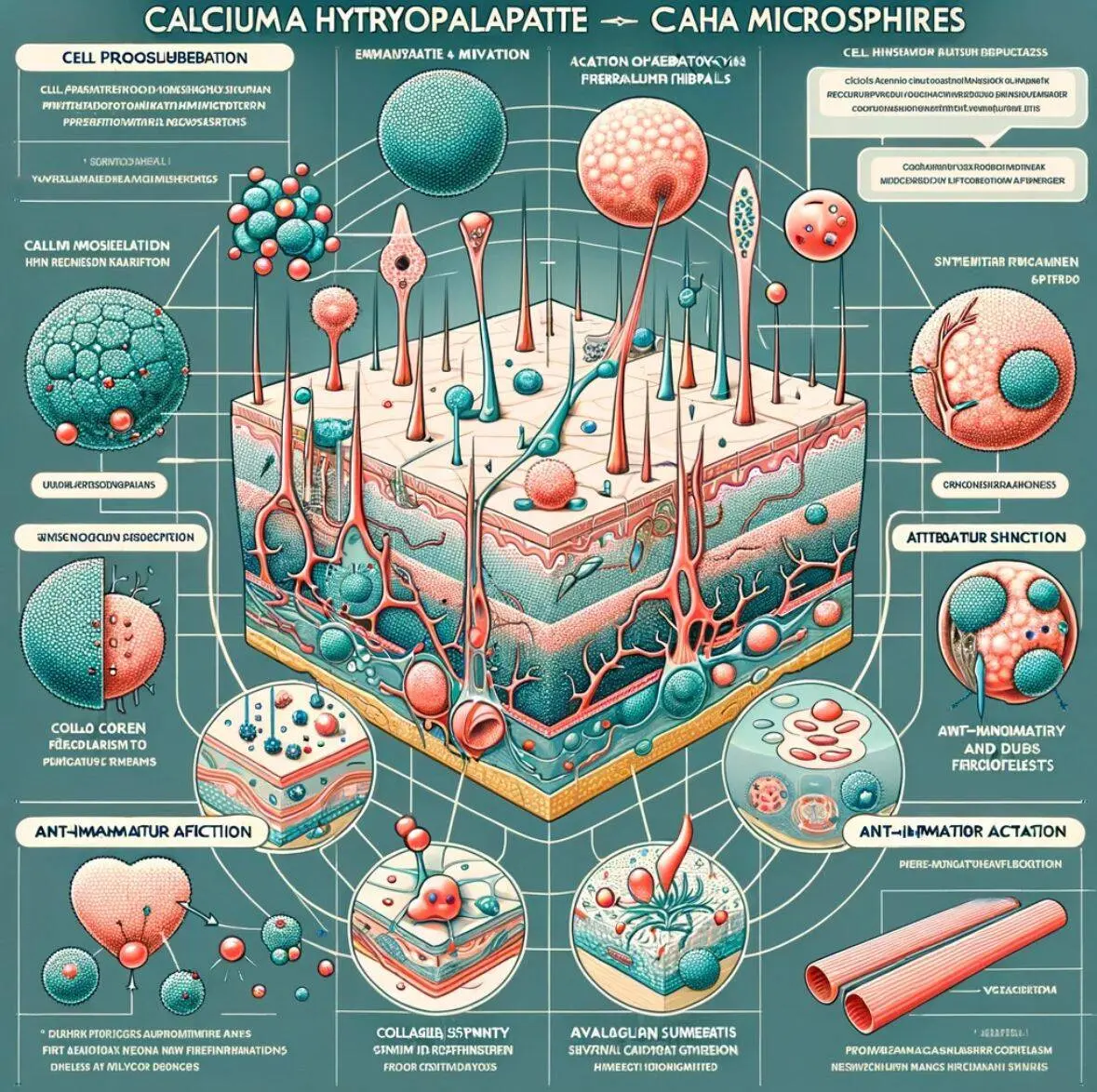The application of Calcium Hydroxyapatite (CaHA) microspheres in the field of skin regeneration is a very promising research direction.
The following is a review on the skin regeneration mechanism of CaHA microspheres:
1. Basic characteristics of CaHA microspheres
Chemical composition and structure: CaHA is a mineral naturally found in human bones and teeth. It is composed of calcium and phosphorus
and has good biocompatibility and bioactivity.
Biocompatibility: Due to its chemical composition being similar to the body's natural bone, CaHA is considered a very biocompatible material.
2. Mechanism of skin regenerationCell proliferation and migration promotion: CaHA microspheres can provide a supporting structure to promote the adhesion, proliferation
and migration of skin cells.Keratinocyte and Fibroblast Activation: CaHA microspheres activate the skin's major cell types, such as keratinocytes and fibroblasts, which
are essential for skin repair and regeneration.
Collagen Synthesis Boost: CaHA microspheres stimulate collagen production, enhancing skin elasticity and firmness.
3. Immunomodulatory effect
Anti-inflammatory effect: CaHA microspheres may have anti-inflammatory effects in skin damage repair, reducing inflammatory responses
and accelerating the healing process.
Immune cell regulation: CaHA may influence the behavior of immune cells and thereby play a regulatory role in the skin regeneration process.
4. Promote angiogenesis
Promotes neovascularization: The formation of blood vessels is crucial during skin regeneration. CaHA microspheres promote the formation
of new blood vessels, thereby providing essential nutrients and oxygen supply and accelerating skin healing.
Enhanced local blood circulation: By improving blood circulation in damaged skin areas, CaHA microspheres help speed up the repair process.
5. The role of delivery systems
Carrier of drugs and growth factors: CaHA microspheres can serve as a delivery system for drugs and growth factors, delivering these
therapeutic factors directly to damaged skin areas and promoting rapid skin regeneration.
Sustained release effect: CaHA microspheres can achieve sustained release of drugs or growth factors to ensure sustained and stable
therapeutic effects.
6. Clinical applications and future prospects
Cosmetic and Plastic Surgery: In cosmetic and plastic surgery, CaHA microspheres have been used as dermal fillers to improve skin texture
and appearance.
Chronic Wound Treatment: CaHA microspheres have shown potential to promote skin regeneration in the treatment of difficult-to-heal chronic
wounds.
Future research directions: Future studies may focus on optimizing the size, shape, and surface properties of CaHA microspheres to improve
their efficacy and safety in skin regeneration.
Taken together, CaHA microspheres exhibit significant potential in skin regeneration by promoting cell proliferation, migration, angiogenesis,
and immunomodulation, as well as by acting as drug delivery systems.
Provides multi-faceted support for skin regeneration. With more research and clinical trials, the application prospects of CaHA microspheres
in the medical field will be broader.
